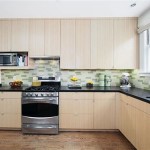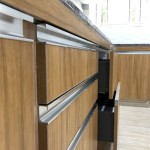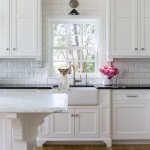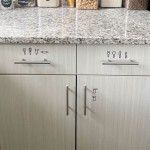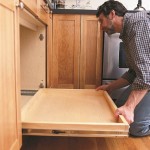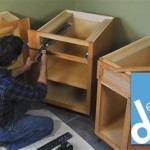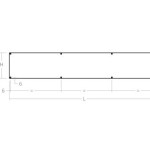How To Put Drawers In Existing Kitchen Cabinets
Adding drawers to existing kitchen cabinets can significantly improve organization and accessibility. This seemingly complex task is achievable with careful planning and execution. This article provides a comprehensive guide to retrofitting drawers into existing kitchen cabinets, transforming storage space and enhancing kitchen functionality.
1. Planning and Assessment
Before beginning any physical modifications, thorough planning is essential. Begin by assessing the existing cabinet interiors. Measure the cabinet's width, depth, and height accurately. Consider the desired drawer size and the number of drawers to be installed in each cabinet. Account for any internal obstructions like plumbing or electrical wiring. This assessment helps determine the feasibility of the project and guides material selection.
Choosing the right drawer slides is crucial for smooth operation and durability. Consider factors like weight capacity, extension type (full, partial, or over-travel), and mounting style (side-mount, under-mount, or center-mount). Side-mount slides are generally the easiest to install in retrofit situations. Ensure the selected slides are compatible with the planned drawer dimensions and cabinet structure.
Developing a detailed plan includes sketching the drawer configuration within the cabinet, specifying drawer dimensions, and listing required materials. This plan serves as a roadmap for the entire process, minimizing potential errors and ensuring a successful outcome.
2. Material Selection and Preparation
Select high-quality materials for the drawer boxes and fronts. Common choices include plywood, solid wood, or medium-density fiberboard (MDF). Plywood offers good strength and stability, while solid wood provides a more traditional look. MDF is a cost-effective option with a smooth surface, ideal for painting. The choice of material depends on budget, aesthetic preferences, and desired durability.
Once the materials are acquired, cut them to the required dimensions according to the plan. Accurate cutting is critical for proper drawer fit and function. Utilize appropriate woodworking tools, such as a table saw or circular saw, ensuring precise and clean cuts. Sand down all cut edges to create smooth surfaces for finishing and assembly.
Prepare the cabinet interior for drawer installation. This may involve removing existing shelves or modifying internal supports. Ensure the cabinet structure is sound and capable of supporting the weight of the drawers and their contents. Any necessary repairs or reinforcements should be completed before proceeding.
3. Drawer Assembly and Installation
Assemble the drawer boxes using appropriate joinery techniques, such as wood glue and screws. Ensure square and sturdy construction for optimal drawer performance. Reinforce joints with corner brackets for added strength, especially for larger drawers intended to hold heavier items. Accurately pre-drill screw holes to prevent wood splitting.
Mount the drawer slides onto the cabinet sides according to the manufacturer's instructions. Careful alignment and secure fastening are essential for smooth drawer movement. Use a level to ensure the slides are perfectly horizontal. Inaccurate slide installation can lead to binding or uneven drawer operation.
Attach the drawer fronts to the drawer boxes. Ensure proper alignment and consistent spacing between drawers. Use appropriate fasteners and consider concealing screw heads for a cleaner aesthetic. The drawer fronts serve as the visible part of the drawers, so their installation requires precision and attention to detail.
Install the assembled drawers onto the mounted slides. Test the drawer movement, ensuring smooth gliding and proper alignment. Adjust the slide position if necessary to achieve optimal performance. Address any binding or sticking immediately to prevent long-term issues.
4. Finishing and Hardware Installation
Apply the desired finish to the drawer fronts. This might include painting, staining, or applying a clear coat. The chosen finish should complement the existing kitchen cabinetry for a cohesive look. Proper surface preparation, such as sanding and priming, is essential for a smooth and durable finish.
Install drawer pulls or handles. Select hardware that complements the overall kitchen design and provides a comfortable grip. Position the hardware consistently on each drawer front for a professional appearance. Ensure secure fastening to prevent loosening over time.
After installation, conduct a final inspection to verify smooth drawer operation and proper alignment. Address any remaining issues or adjustments promptly. Regular maintenance, such as cleaning the slides and tightening hardware, will ensure long-lasting functionality and extend the lifespan of the newly installed drawers.

How To Install Drawer Pullouts In Kitchen Cabinets Ers

How To Easily Add Drawers Kitchen Cabinets Small Stuff Counts

My 9 Best Tips For Installing Cabinet Drawers Remodelando La Casa

My 9 Best Tips For Installing Cabinet Drawers Remodelando La Casa
:strip_icc()/102326027-c240150e2d95420a85bc45f473f98644.jpg?strip=all)
How To Install Soft Close Drawer Slides

How To Convert Base Cabinet Shelves Drawers

How To Transform Messy Cabinets Into Organized Drawers A Diy Guide Hometalk

How To Easily Add Drawers Kitchen Cabinets Small Stuff Counts

Kitchen Drawer Organizer Adding A Double To Existing Cabinet Ana White

How To Build Under Cabinet Drawers Increase Kitchen Storage Diy Family Handyman
Related Posts

